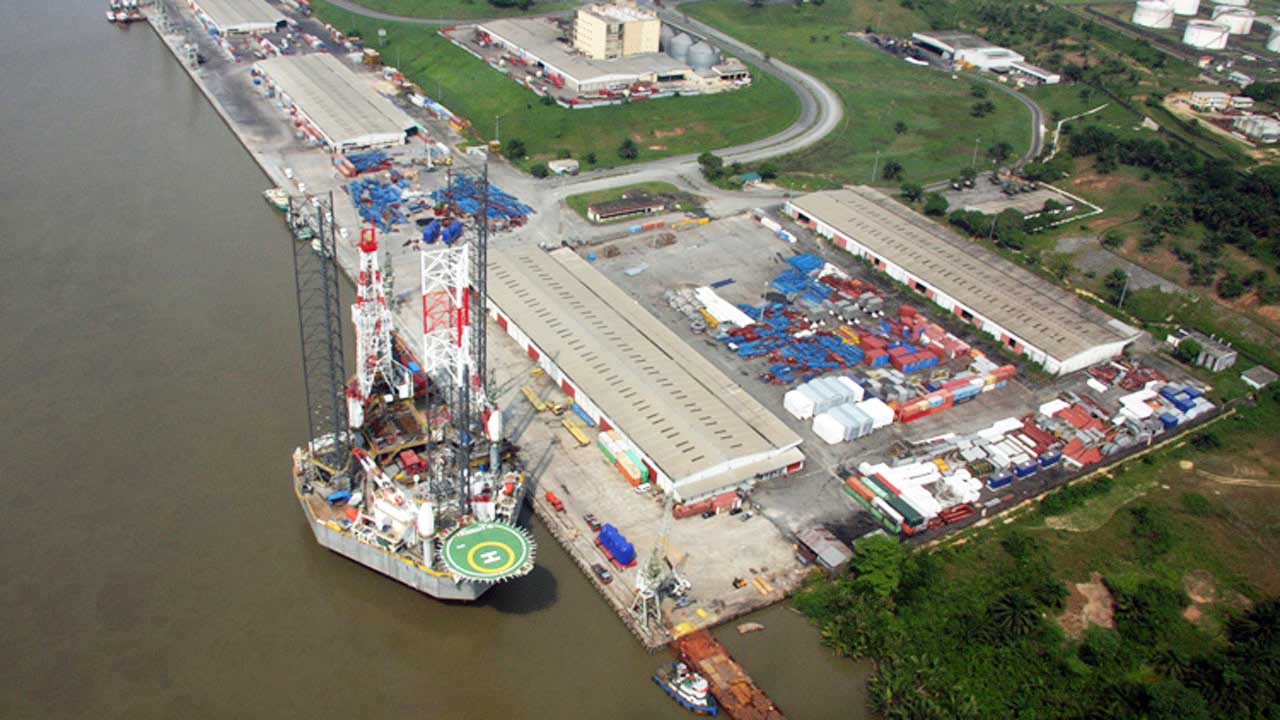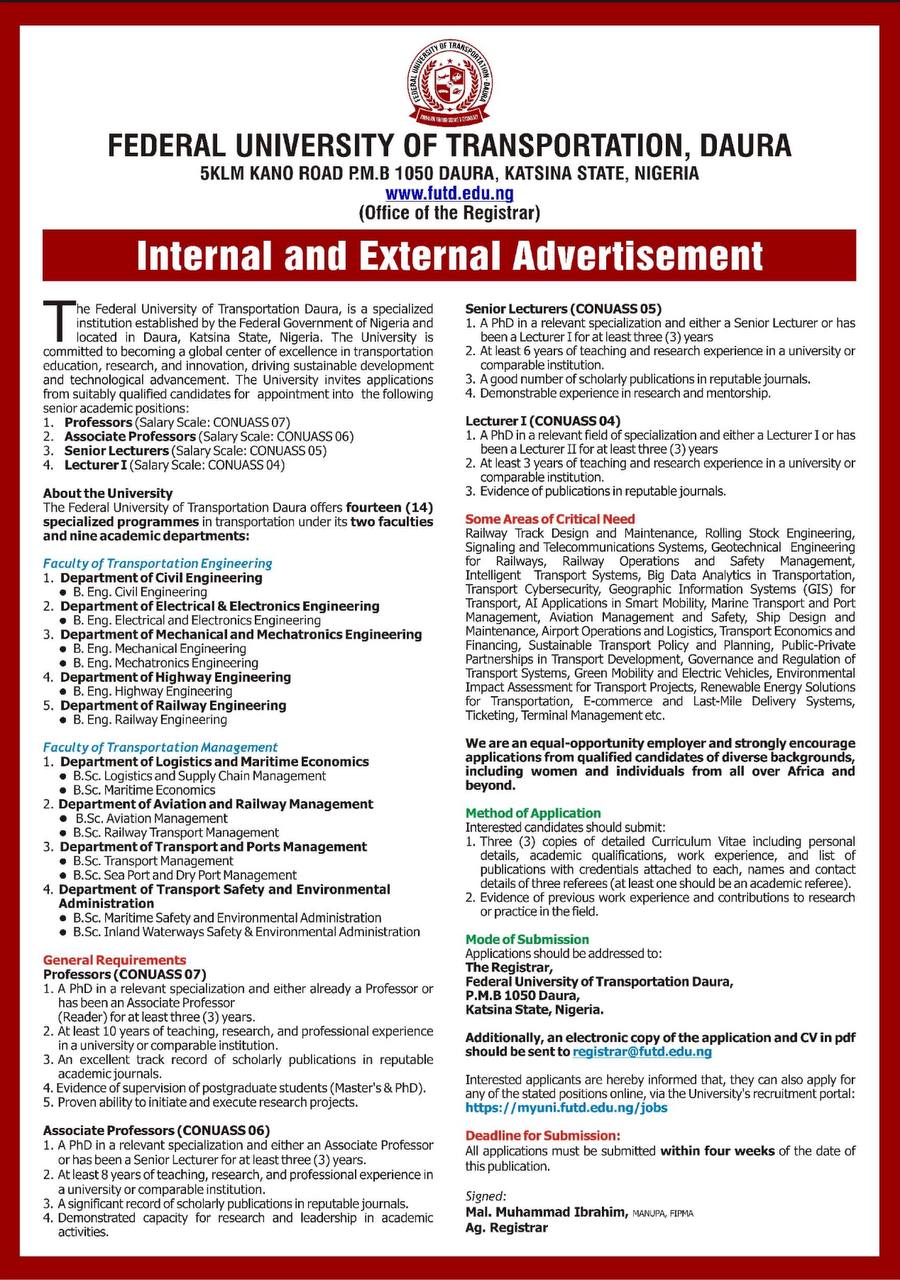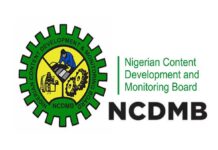POSITION PAPER PRESENTED BY THE PRESIDENT OF ASSOCIATION OF MARITIME JOURNALISTS OF NIGERIA (AMJON) AT A PUBLIC HEARING HELD BY THE HOUSE OF REPRESENTATIVES AD-HOC COMMITTEE TO DETERMINE WHY THE WARRI, PORT HARCOURT, CALABAR, ONNE AND ONITSHA PORT COMPLEXES ARE NOT BEING PUT TO MAXIMAL USE. HOLDING TODAY, THURSDAY AUGUST 15TH, 2019, AT THE NATIONAL ASSEMBLY COMPLEX, THREE ARMS ZONE, ABUJA, FCT.
info@amjon.org
PREAMBLE
Despite the 2006 port concession programme that gave Nigerian ports to private operators, efforts by the Nigeria Ports Authority (NPA)to engender enhanced port activities in the eastern zone of it port operation have either remained underutilized or completely in doldrums.
Sequel to the near inactivity in the NPAs operations, otherwise known as Easter Ports, 14 years after the concession programme, the Apapa and Tin Can Island ports have been experiencing traffic congestion due to increasing cargo throughput occasioned by the 2006 port reform carried out by the Federal Government.
The reform among other things was aimed at making Nigerian seaports more efficient, effective and to attract more cargoes.
We in AMJON, the umbrella body of journalists reporting maritime in Nigeria, believe that the inactivity or low activity in the Eastern ports has to a large extent become a disincentive to the gains the Country is supposed to reap from the port concession programme, which no doubt has brought some level of efficiency in the industry, growing the countrys cargo inflow to all time peak of 84.9 million metric tones in 2014. We had our lowest cargo throughput of 35.9 million metric tones in 2018.
Inactivity and or underutilization of the five seaports and the Ontisha River Port that make up the Eastern Port is the reason why there is OVER UTILISATION of the Lagos seaports (Apapa and Tin Can Island ports).
NEGATIVE IMPACTS OF UNDERUTLISATION OF EASTERN PORTS
Intermittent cargo congestion at Apapa and Tin Can Island ports.
High cost of doing business in Nigerian seaports/inefficiency.
The Apapa gridlock that has defied all solutions/worse logistics crisis in history.
Loss of cargo traffic to the ports of Nigerias next door neighbors (Benin Republic, Togo and Cameroon); and
Wasting of critical national investment that would boost economy and create mass employment.
PORT CONGESTION
The believe in the international shipping arena is that port congestion in the Lagos ports which normally becomes pronounced in the fourth quarter of the year, will not end because while modern ports are known to be transit area and holding bay, but not a storage zone. But the reverse is the case in the Lagos ports.
Today, the nations two leading ports located in the heart of Apapa are regarded as a storage area and residential environment. Lagos ports are currently congested because of warehouses and residential homes built around the ports.
Other factors contributing to the congestion around the ports include bad road network, cumbersome transit procedures, inefficient logistics systems and poor infrastructure.
Over 40 years ago, all the points listed, except bad roads were part of the system, but were no problem at all. The port city of Apapa was also an industrial city, but that has become a problem now because in those days Eastern Ports were in full operation, hence Lagos Ports were not overstretched unnecessarily as is the case today, almost 90 per cent of the nation coming through the two ports while the five ports in the eastern zone are either idle or underutilized.
HIGH COST OF DOING BUSINESS IN NIGERIAN PORTS
Until recently, it costs about N280, 000 to transport a 40 foot container within Lagos and Ogun. But today for the same distance a consignee will cough out over N800, 000. For Outer Lagos East or North, the consignee used to pay N450,000 for 40 feet container, but today he pays over N1.5 million for the same 40 foot container.
This is aside from other charges at the port which would not have been necessary, like Storage Charge and other charges that have been subject of disagreement between the Terminal Operators and the Port Users.
APAPA GRIDLOCK/LOGISTIC CRISIS
President Muhammadu Buharis order to clear the Apapa gridlock has yielded some fruits, but experts say, assuming the order succeeds in finally in clearing the gridlock, it will only last for a while and the gridlock will naturally return when the pressure from the Lagos ports becomes overwhelming.
The cost of the gridlock is massive logistics crisis which is scaring multi-national investors out of the country. One of them with its headquarters at Ijora, Lagos and is into automotive, household good distributions, pharmaceuticals and agriculture business, recently told us during a discussion that the cost of moving his consignment from Apapa Port to his warehouse at Amuwo Odofin in Lagos is more than the cost of freighting the consignment from Japan to Apapa port.
THE EASTERN PORTS (WHY THE ARE NOT WORKING)
The Eastern Ports, comprises of Warri Port and Koko Port (otherwise known as Delta Ports Complex). Others are: Port Harcourt Port, Onne Port and Calabar Port. The last but not the least is the Ontisha River Port (in port register, will rather be referred to as Onitsha Lighter Terminal).
Without mincing words, if these ports known collectively as Eastern Ports are to be fully functional today, gridlock cum logistics cum cargo congestion at the Lagos Ports and the port city of Apapa will not be there.
Though the Nigeria Ports Authority, especially the Hadiza Bala-Usman led management has been making frantic effort to bring back’ the eastern ports, it is worthy to note that the Nigerian civil war, government preference of Lagos ports for the importation of certain goods, insurgency cum host community sabotage and past NPA management lip-service to dredging port channels and upgrading of old port infrastructures are key factors that have made it impossible for the country to maximize the use of these Eastern Ports.
So, as the names of these Eastern Ports are different, so are their challenges, some related, some unrelated.
The Eastern Ports today after the port concession in 2006 consists of 15 terminals namely:
1Port Harcourt Terminal A Concessioned to Ports & Terminal Operators Nigeria Limited.
2 Port Harcourt Terminal B, Concessioned to Bua Ports & Terminals Limited.
3 Onne FOT A, Concessioned to Intels Nigeria Limited.
4 Onne FLT A, Concessioned to Brawal Oil Services Limited.
5 Onne FLT B, Concessioned to Intels Nigeria Limited.
6 Jetty FOT,Onne, Concessioned to Atlas Cement Company Limited.
7 Calabar New Terminal A, Concessioned to Intels Nigeria Limited.
8 Calabar New Terminal B, Concessioned to Ecomarine.
9 Calabar New Terminal C , Concessioned to Addax Logistics Nigeria Limited.
10 Warri Old Terminal A, Concessioned to Intels Nigeria Limited.
11 Warri Old Port Terminal B, Concessioned to Associated Maritime Services Limited.
12 Warri New Terminal A, Concessioned to Global Infrastructure Nigeria Limited.
13 Warri New Terminal B, Concessioned to Intels Nigeria Limited.
14 Warri Terminal C, Concessioned to Julius Berger Plc.
15 Koko Terminal, formally Concessioned to Gulftainer Limited, now Sifax Group for 25years.
16 Onitsha River Port (Not yet Concession).
NOTE : The Eastern ports has Six terminals in Rivers State (two in Port Harcourt port complex and four in Onne port ), three terminals in Calabar Port in Cross River State , Six terminals in Warri Port , Delta State and one in Onitsha , Anambra State.
DELTA PORTS COMPLEX (WARRI AND KOKO)
The Delta Ports which historically was the Groundnuts Pyramids port started losing traffic during the civil war when the Federal Government rationally stopped the movement of groundnuts from Baro Port through the River Niger to the port for export to Europe and elsewhere in the world. However, with Nigerias increasing needs after the war, followed by increasing importation, the port became very important in the 70s, 80s and early 90s.
However, the Itsekeri/Urhobo and Ijaw/Itsekiri inter-ethnic crisis of the 90s, and the later Niger-Delta militancy took a dangerous toll on the port. The warring ethnic groups at a time made it impossible for NPA to erect perimeter fencing at the port. Infact the sabotage of the local people got to point when advanced team of journalists that went for the flag-off of oil and gas free zone in Delta State by former President Goodlock Jonathan, were kidnapped by militants. Their grouse was that the project must be sited in their own locality; I think that marked the beginning of the death of the mega project.
CALABAR PORT
The key problem of the Calabar Port is shallow draught. There is also the problem of criminals on the waters, (a national problem anyway), collapsed quay apron and dilapidated access roads.
ONNE PORT
Port access road is in very bad shape and the port also needs rail connection.
PORT HARCOURT PORT
Collapse of quay apron and the poor access roads of Port Harcourt Port.
ONITSHA RIVER PORT
Since the construction of the Ontisha River Port to lightering cargoes from Apapa and Port Harcourt to terminal (Port) to serve the shippers in Ontisha, Nnewi and other surrounding towns. It has not been operationalised, even after the completion of the dredging of the River Niger to Baro in Niger State.
Because of the afore-mentioned challenges, no fewer than 754 vessels are said to have deserted the Eastern ports between 2013 and 2016. Specifically, the number of vessels that berthed at the ports reduced from 2,268 vessels in 2013 to 1,514 in 2016.
According to the National Bureau of Statistics (NBS), the number of vessels that berthed at the Delta port fell from 609 in 2013 to 433 in 2016, while the Gross Registered Tonnage at the port also dropped from 8,687,160 in 2013 to 6,177,809 in 2016.
OPERATORS INVESTING IN ANTICIPATION
However, the operators are investing in anticipation for cargoes from Lagos ports due to the traffic congestion the western ports face. For instance, the West Africa Container Terminal (WACT), a terminal operator at the Onne port has in the last three years invested approximately $3.5 million in various container handling equipment like five reach stackers, two empty handlers and 14 terminal trucks.
The operator also recently invested $10 million in two mobile harbour cranes in order to better serve its customers. Also, to complement the investment of terminal operators and to attract cargoes to the eastern ports, the Nigerian Ports Authority (NPA) introduced a rebate for vessels that call at the eastern port.
The NPA had announced the approval of a 10 per cent discount on harbour dues in all concessioned terminals at the Eastern ports. The NPA said the ports that would be affected by this initiative are: Calabar, Rivers and Delta Ports.
GOVERNMENT INTERVENTION
According to the General Manager, Corporate and Strategic Communications, Nigerian Ports Authority (NPA), Engr. Adams Jatto, NPA and NIMASA are partnering with the Nigerian Navy to curb insecurity in the Nigerian maritime domain, including the Eastern Ports. He also said that the NPA has commenced procurement process to ensure that Port Harcourt port quay aprons are properly rehabilitated and also to dredge the Calabar channel so that bigger vessels can come in.
RECOMMENDATIONS
- While we wish to commend the Managing Director of NPA, Ms Hadza Bala-Usman, the Director General of NIMASA, Dr Dakuku Peterside and the security agencies for their efforts at tacking the security challenges (Gulf of Guinea Piracy) in the Eastern Ports, we state that all Nigerian ports are facing the menace of insecurity and that the eastern ports is still frightening.
- We also wish to commend Ms Hadiza Bala-Usman for the 10 per cent discount on harbour dues in all concessioned terminals at the Eastern ports and urged her to churn out more incentives to attract vessels into the area.
- We urged the NPA to take a holistic review of the 2006 ports concession agreements so as to terminate the contracts of those private operators who have not lived up to expectations.
- We also wish to commend NPA for commencing process for the procurement of quay apron for the Port Harcourt Port.
- The NPA should implement the 25years ports development master plan established few years ago so as to fully utilize the various ports across the Country.
- We will further recommend that a fresh dredging of the Calabar port and like we have the Lagos Channels Management and Bonny Channels Management, the Calabar Channels Management must live up to expectation by maintaining the draft channel of the calabar port.
- The Onne Port access roads should be immediately be rehabilitated.
- Aside providing the necessary port infrastructures and rehabilitating the port access roads of Delta Port, the NPA/Delta State Government/Host Communities Itsekeri, Ijaw and Urhobo need to agree that the port will no longer be sabotaged and will be secured by the communities themselves.
9.While the Federal Government needs to operationalize the Onitsha River Port by ensuring that the port is designated as a port of destination, carry out a fresh capital dredging and put in place a maintenance dredging arrangement and then concession (infact concession should come last).
- The National Assembly should make laws that attract equal usage of Nigeria Ports for the benefit of the Country.
- The National Assembly should carry out oversight functions to the eastern ports so as to determine their challenges and finding solutions to them.













